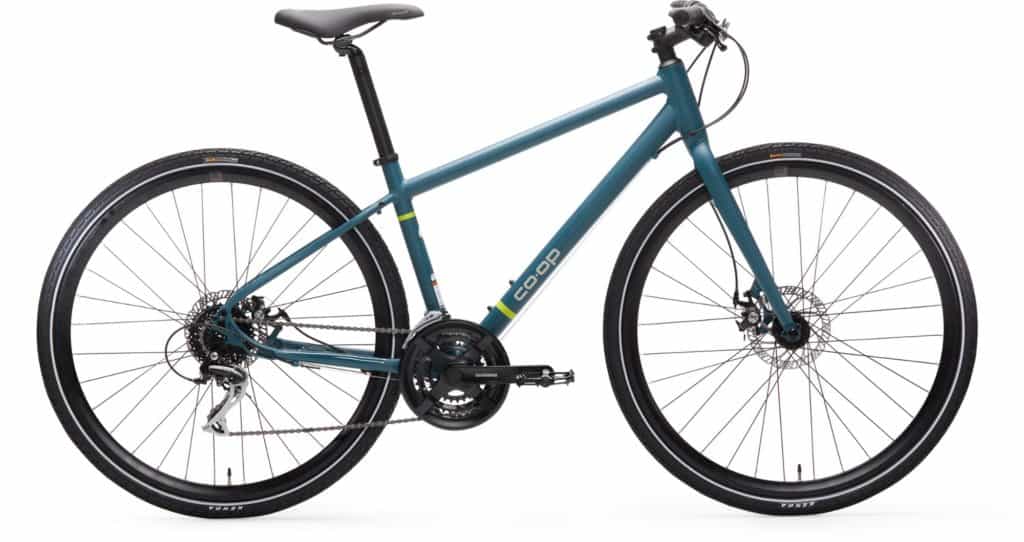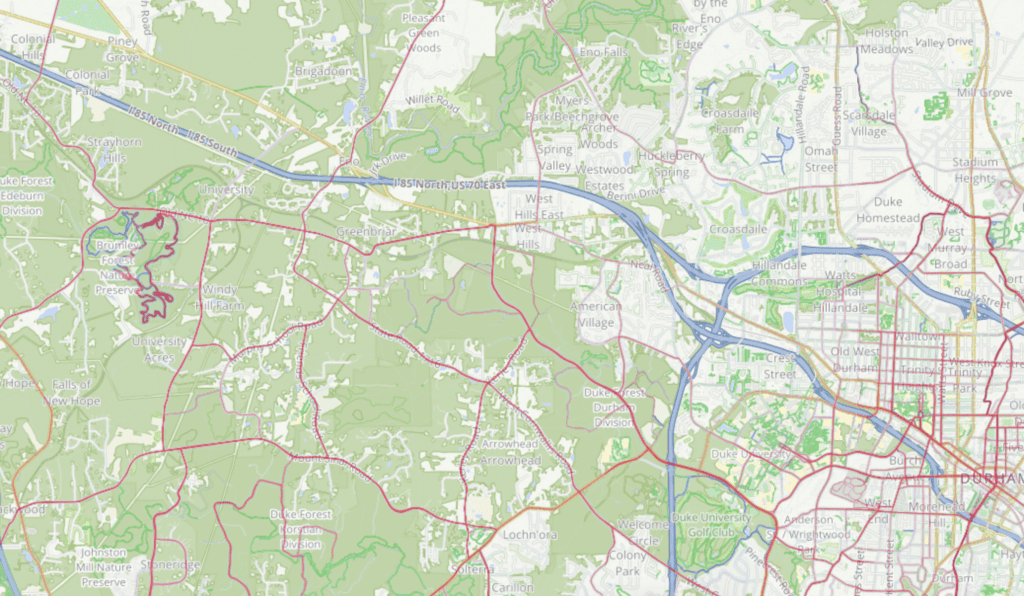Many of my articles and videos are focused on the bike commuter that is already riding and can justify spending more on a new bike because they are saving money from not driving, or for someone that $500+ on a new bike isn’t too much of a worry. I want to take a step back to focus on those just getting started, maybe their bus route was canceled, maybe their walking commute became a biking commute, or maybe the idea of saving some money on Uber and transit is ideal and they want to try biking.
With these things in mind, I’m starting the “The Absolute Basics to Start Bike Commuting” series. These are the things I wish someone had told me when I was in middle school bike commuting, and the things I shared every day when working in city biking-focused shops.

The Bike
In order to commute by bike, you need a bike. It should be in working shape with the brakes stopping, and gears shifting. If you are going to Walmart to look for a bike, I would first look for a used bike shop or ideally something called a “Recyclery” or “Co-op”. They are typically non-profits that have used bikes that they have fixed up. You’ll get a nicer bike for the money that has been checked over by a mechanic.
What to Look for in a New City Bike
• Seat height is right, and the bike fits you
• Ideally a city bike with smooth yet durable tires
• The tires are holding air. Keeping the tires inflated right will help prevent flats and make you faster. You’ll need to check this every week or two so be ready to add air with a bike pump. DO NOT USE A GAS STATION AIR COMPRESSOR!
• My perfect city bike has racks and fenders, but if you are on a budget look below for the first things to buy (not a rack and fenders)
Important Bike Commuting Accessories
• You’ll need to store or lock your bike where you are going. Good bike locks start at about $30. Do not use a cable lock to secure your bike.
• If you are riding at night, you need to be seen. Wear a safety vest or brighter clothing, and have lights.
• Basic blinky bike lights start at about $30 to be seen. You won’t be able to see well, for a lot of info on bike commuting lights read this article.
• Helmets can help protect your head if you fall, I’m a big fan of them. Good basic bike helmets start about $40
• Something to carry things – this could be a backpack, a bag on your bike, a trailer, there are so many options. Start with what you have and add to it.
Finding Safe Roads to Bike On
Figuring out how to safely bike around your community is the most important piece to this. I would personally start by contacting local bike shops and local bike advocacy groups to see if someone lives near you or knows your area to help you figure out where to bike.
Google maps for biking is okay, but sometimes puts you on streets you shouldn’t be on. I suggest the first time you need to bike somewhere, go early, or try it on a different day when you aren’t stressed for time.

Ride with GPS heat map is my go-to way of figuring out where other bike riders go. It still may not be the most “low stress” option, but it is a good starting place. I hope that they will add a filter to Ride with GPS to show “Bike Commuting” and remove the people doing it for sport.
Conclusion
I strongly believe that bike commuting, with safe infrastructure, is some of the easiest and most affordable options for transportation. What would you add to this list and series to get folks started?





Sadly, RWG’s heat map is not a great resource in all places. Here in Tasmania I think it is mostly drawn from Strava data, and even so it produces some weird connections. I would like it to be a stronger tool for commuter and everyday riders.
Good feedback! I think they use “Open Streets Map” data. That’s what most maps are built off, I highly doubt strava would share their data with a big competitor 🙂
What do you use down there for routing?
I feel like cargo, how to easily add cargo to a typical bike vs. what is the ideal cargo situation really took me a long time to balance and make it simple for commuting.
Great feedback! What are you carrying by bike?
I mostly hate laptop on the back because it is flat on the back and makes you sweat a ton, then talking lunch, change of clothes sometimes and often some item for after work when I am not going straight home. It started with me and panniers on a road bike carrying that and then stuff to coach ultimate, and has evolved into an ebike that carries basically anything. I feel like a lot of people go ” oh I want to bike to work but I gotta bring some of this stuff, nvm ill drive “
100% agree. I think my goal with these articles (up for ideas) are folks that either MUST bike or the low hanging fruit of being able to ride once a week to try it.
I’m with you on sweaty backs, not cool at all.
This is how I ended up owning two cargo bikes, and my only regret was that I was too timid initially and spent small money only to spend more on upgrades later.
What did you upgrade?!
I love having a handlebar mounted rear view mirror on my commuter bike. If I ever borrow a bike that doesn’t have one, I miss it and feel much more nervous!
Great accessory! Do you have a favorite?